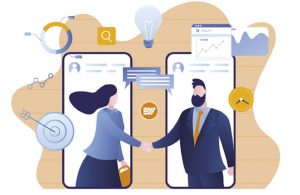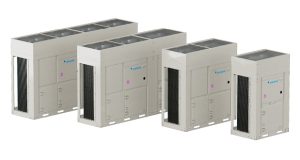VALUE ADDED
With the market being flooded with digital platforms that are focussed in specific areas, whether that is energy management, building performance, asset management or service delivery, most of them add value in their own specific way. But which is the most worth the investment?
Says McDonnell: “That is really dependant on the client’s priorities. Our focus is to provide options in a single platform covering all areas, which we know delivers effectiveness to service as well as energy efficiency and drives asset and building performance. If you get all of this right it delivers a great environment for guests or occupiers alike.”
For Mitie, with sustainability higher on the agenda than ever, clients have started taking a hard look at their operations to identify initiatives that reduce carbon emissions while also taking advantage of potential cost saving opportunities. This means investment in energy monitoring solutions can really pay off.
Says Alloni: “From coffee shops and office buildings through to warehouses and manufacturing plants, energy monitoring solutions create a clear picture of the equipment’s performance and the site’s energy consumption.
“By combining data analytics with an understanding of the client’s needs, such as temperature requirements for some rooms or sites, this data can be used to identify opportunities to improve energy efficiency. For example, if data shows office buildings are using significant amounts of energy when empty, it could highlight that the site needs to go into hibernation.
“Meanwhile, at more complex locations, including data centres, that require specific environmental conditions, such as temperature and CO2 levels, equipment can be managed to maintain the right conditions while improving energy efficiency. Indeed, by hibernating empty office buildings – during lockdowns and bank holidays – and quickly changing the HVAC settings when temperature drops at more complex locations, we’ve helped one of our telecom’s clients save around £10 million in energy costs, equivalent to 25,000 tonnes of CO2, in just three years.”
Mining data effectively remains a priority for Incentive, as McDonnell explains: “Data and telemetry are the hot topics at the moment and the amount of valuable ‘rich data’ which can be harvested is vast. Turning data into real, meaningful management information is the key to the real measurement of service levels and effectiveness, providing real collaborative analytics and proactive insight. Too often we see reams of data along with pretty measurements in reporting packs which do not have the client in mind.”
McGregor believes that digitalisation requires joining the dots between the huge quantities of data available from some of the smallest components of the built environment. “Automated data analysis is a prerequisite to effective measurement of performance in FM – there are simply too many transactions and too much complexity for ‘mandrolic’ systems to cope in real-time.
 “Leveraging the full value of that knowledge, digitalisation will provide FMs with real-time performance management, from simple dashboards and key performance indicator reporting, to the potentially more complex initiation of automated remedial responses.”
“Leveraging the full value of that knowledge, digitalisation will provide FMs with real-time performance management, from simple dashboards and key performance indicator reporting, to the potentially more complex initiation of automated remedial responses.”
COVID AFFECT
The impact of COVID on the digitalisation process has helped escalate the speed of digitisation, and one of the biggest aims of Eric Wright FM’s digital solutions is to make employee’s lives easier, keeping the workforce connected throughout the COVID-19 pandemic and beyond. It is also used for streamlining complex transformational change projects, nominating colleagues for formal recognition, applying for charity match funding or volunteering to become ambassadors in education and mental health.
Transforming all the above and more, into digital workflows has enabled employees, remote and frontline staff, to get involved in company initiatives from anywhere, through their mobiles, tablets or computers. The launch of a new employee engagement platform (purchased from a third-party provider), is also being used to host many apps built in-house. A number of these apps have replaced manual paperwork and long drawn out processes. As a result, employee engagement levels have soared, which has had a direct impact on overall customer experience.
For Mitie, data analytics can offer valuable and objective insights into what is and isn’t working. With this in mind, they’ve rolled-out their own reporting platform, Mozaic, across many of their contracts. Through this, customers can easily raise issues on-site, ranging from a light that needs replacing to a leaky water pipe, track the progress of the job until completion and review how much time was spent on each task.
“This information is stored in the platform and can be used to track trends over time,” says Alloni. “Not only has this increased transparency and helped us improve our performance, but we’re also using data analytics to identify opportunities for our clients to improve equipment efficiency, reduce costs and save carbon.”
However, McGregor argues that COVID may have sped up connectivity but it has slowed down digitalisation.
“The former is needed for businesses to sustain themselves while the latter takes money, time and leadership to develop and most companies are in survival mode currently. That said, corporate acceptance of the efficiency gains and operational resilience created by smart technology has accelerated. Now the significantly greater value comes from ‘digitalisation’, which is much tougher to realise if businesses aren’t intimately aware of their business processes and workflows.”





